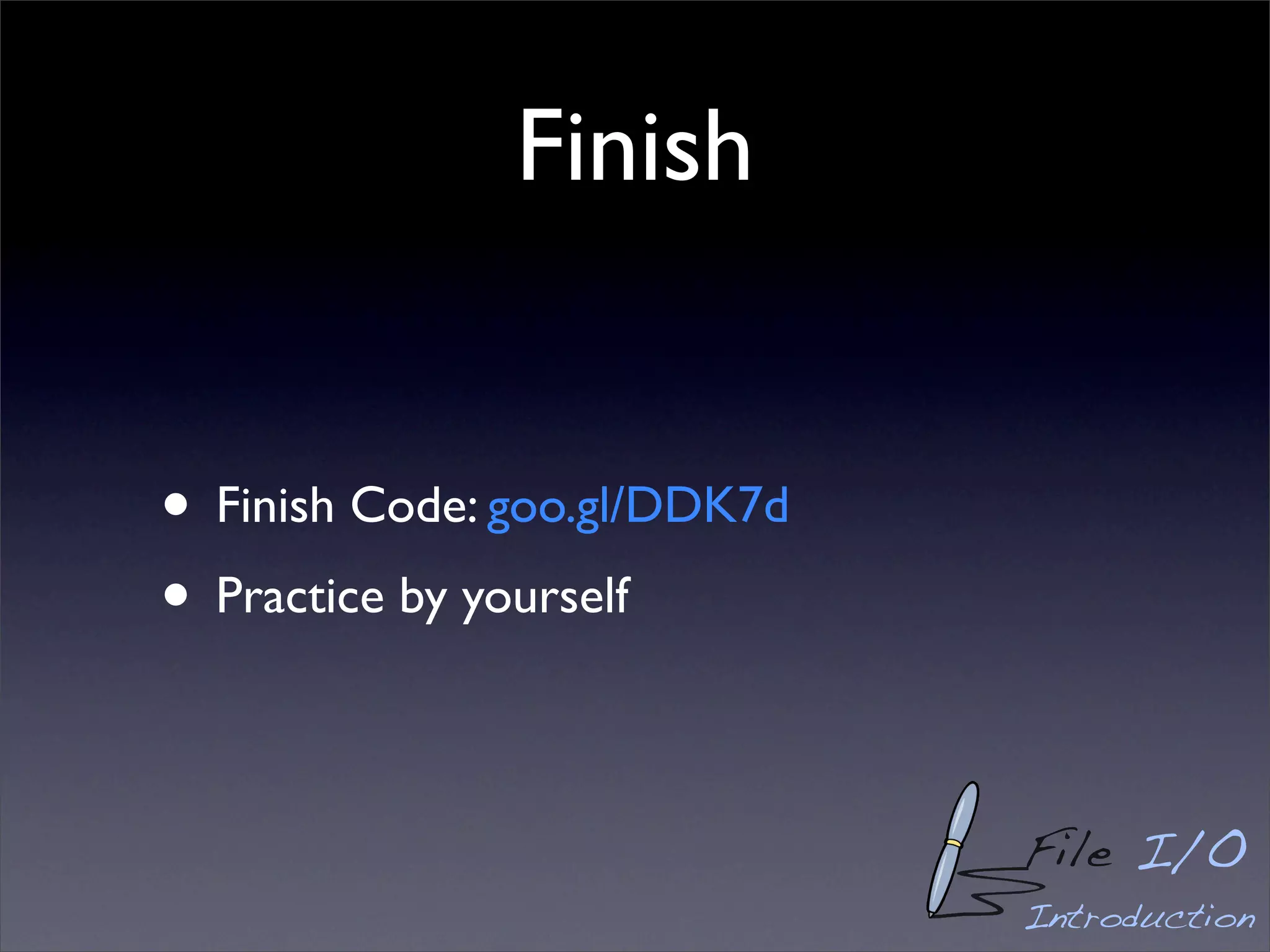This document discusses Python file input/output (I/O) operations. It introduces functions for loading and saving number data from/to files. The load_numbers function opens a file, reads each line by splitting on commas into a name and number, and saves these to a dictionary. The save_numbers function opens a file and writes each dictionary key-value pair on its own line with comma separation. Completing these functions involves properly opening, reading, and closing files while parsing the data format.

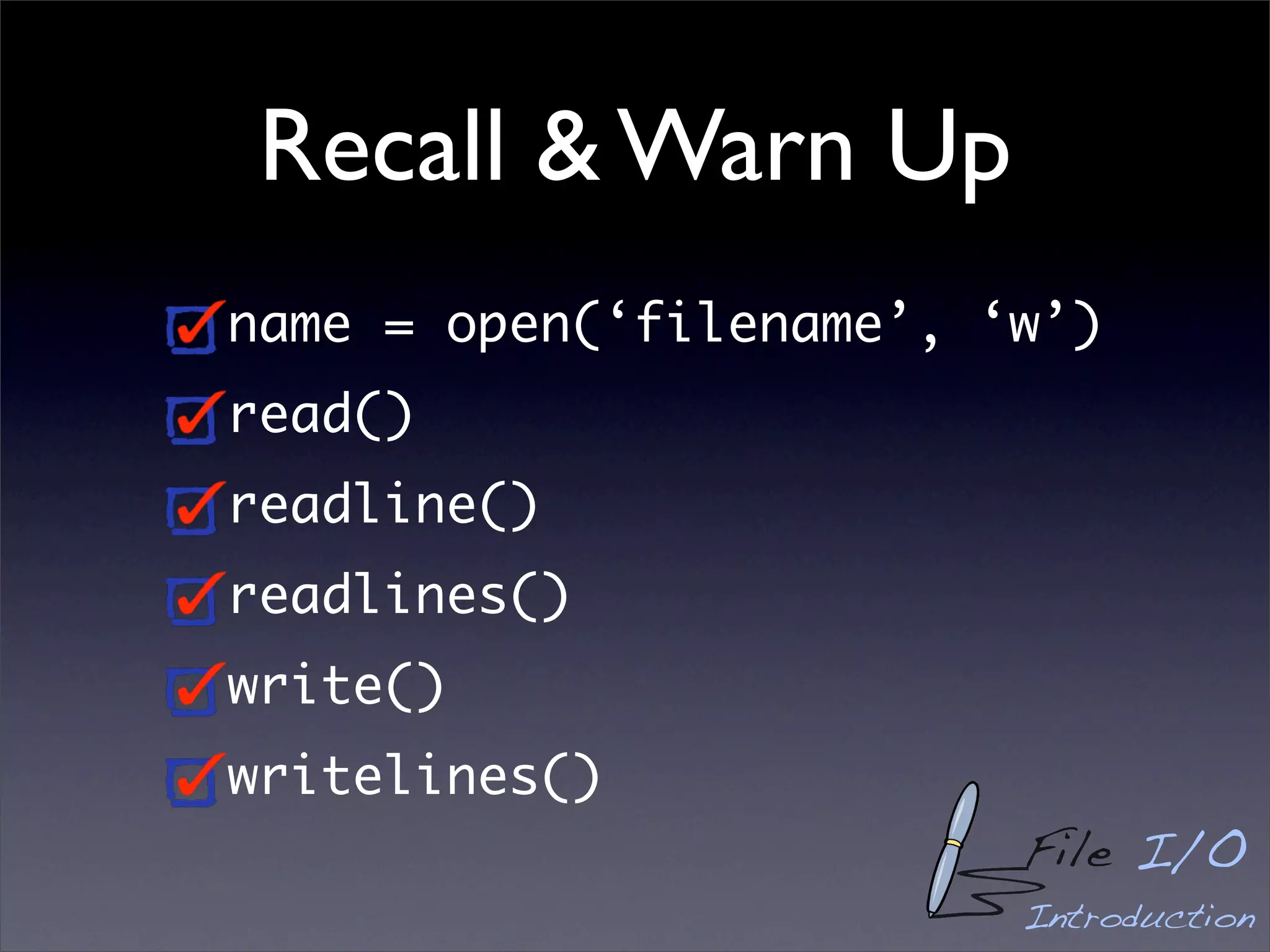

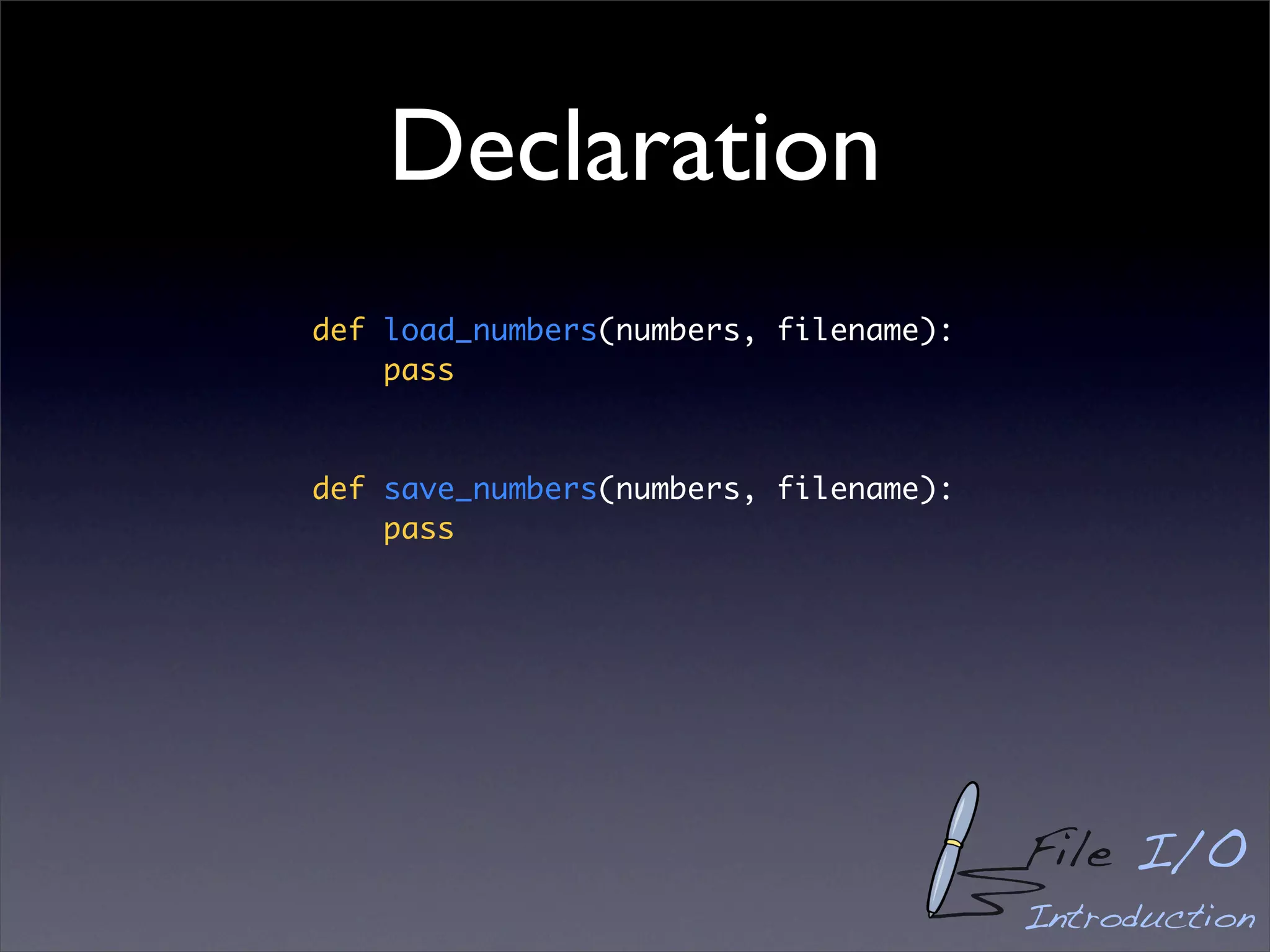
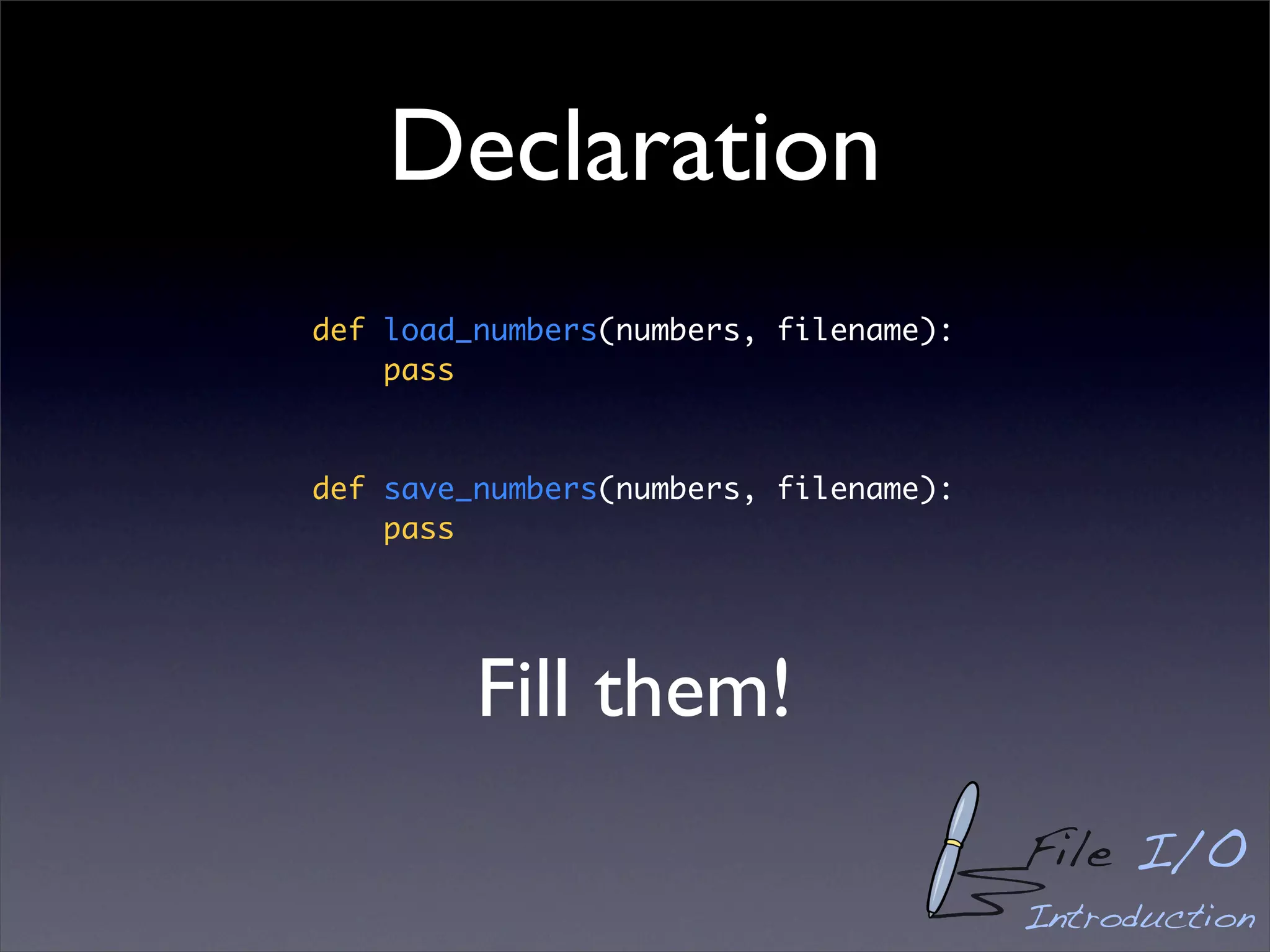
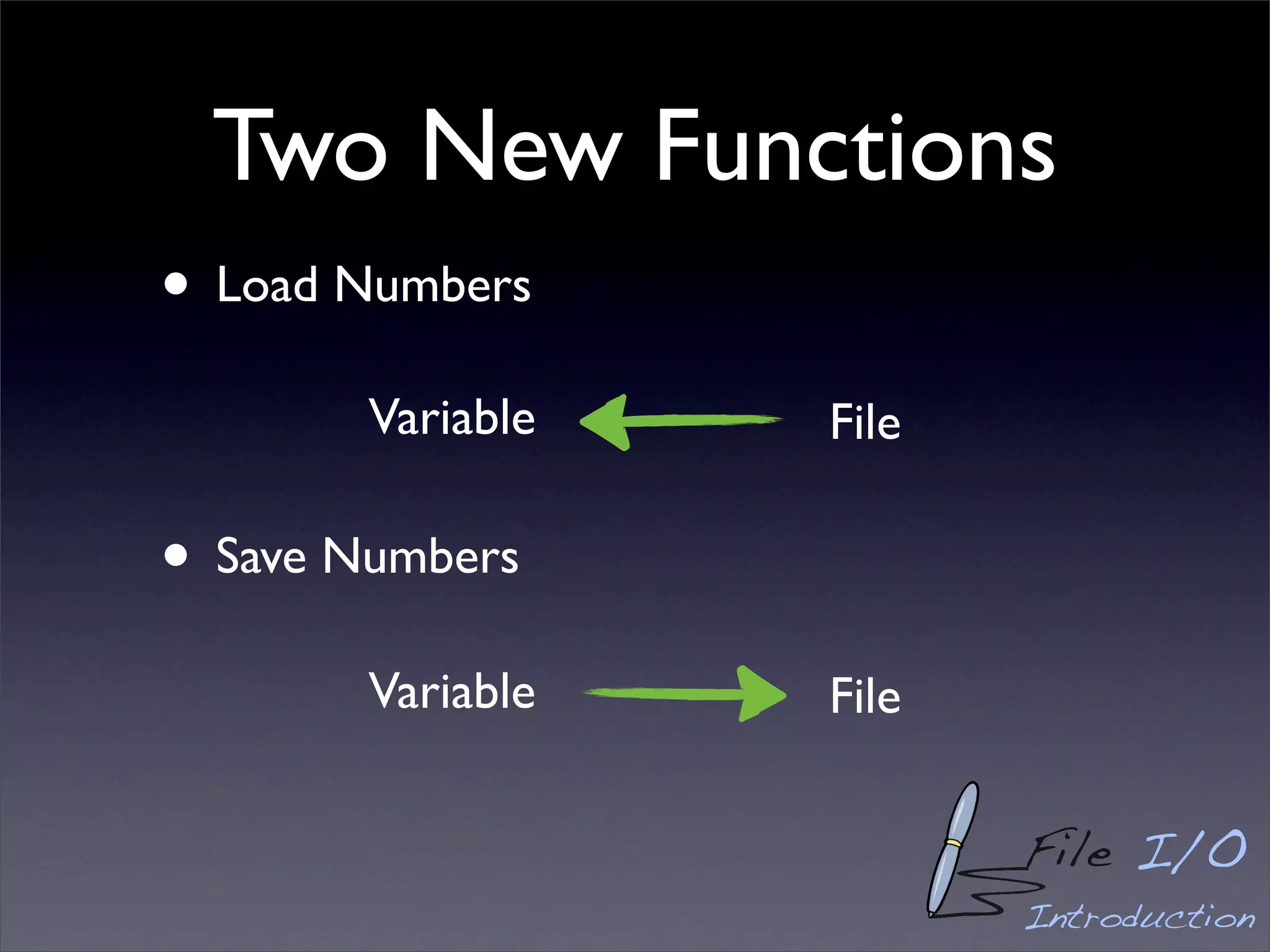
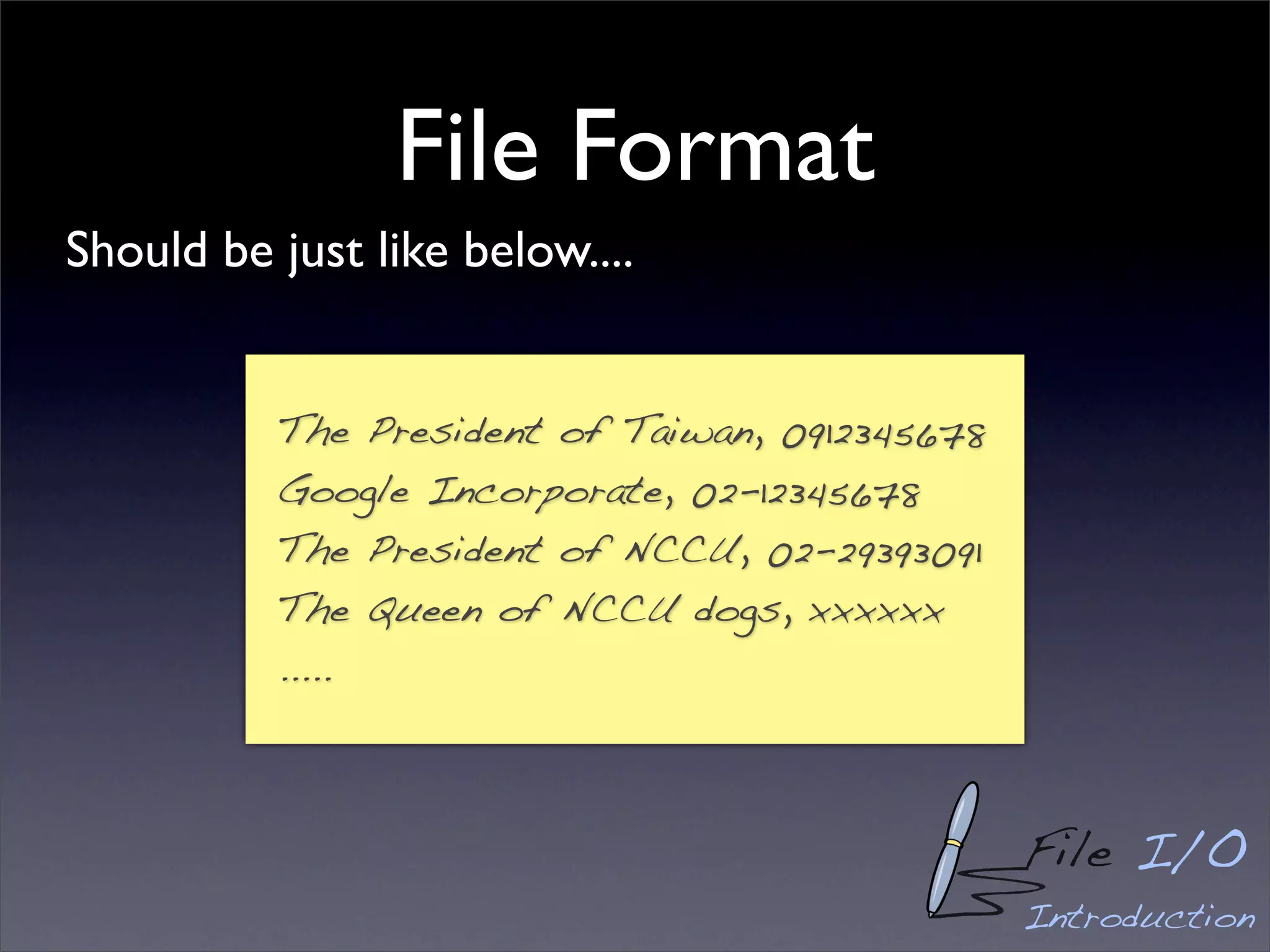
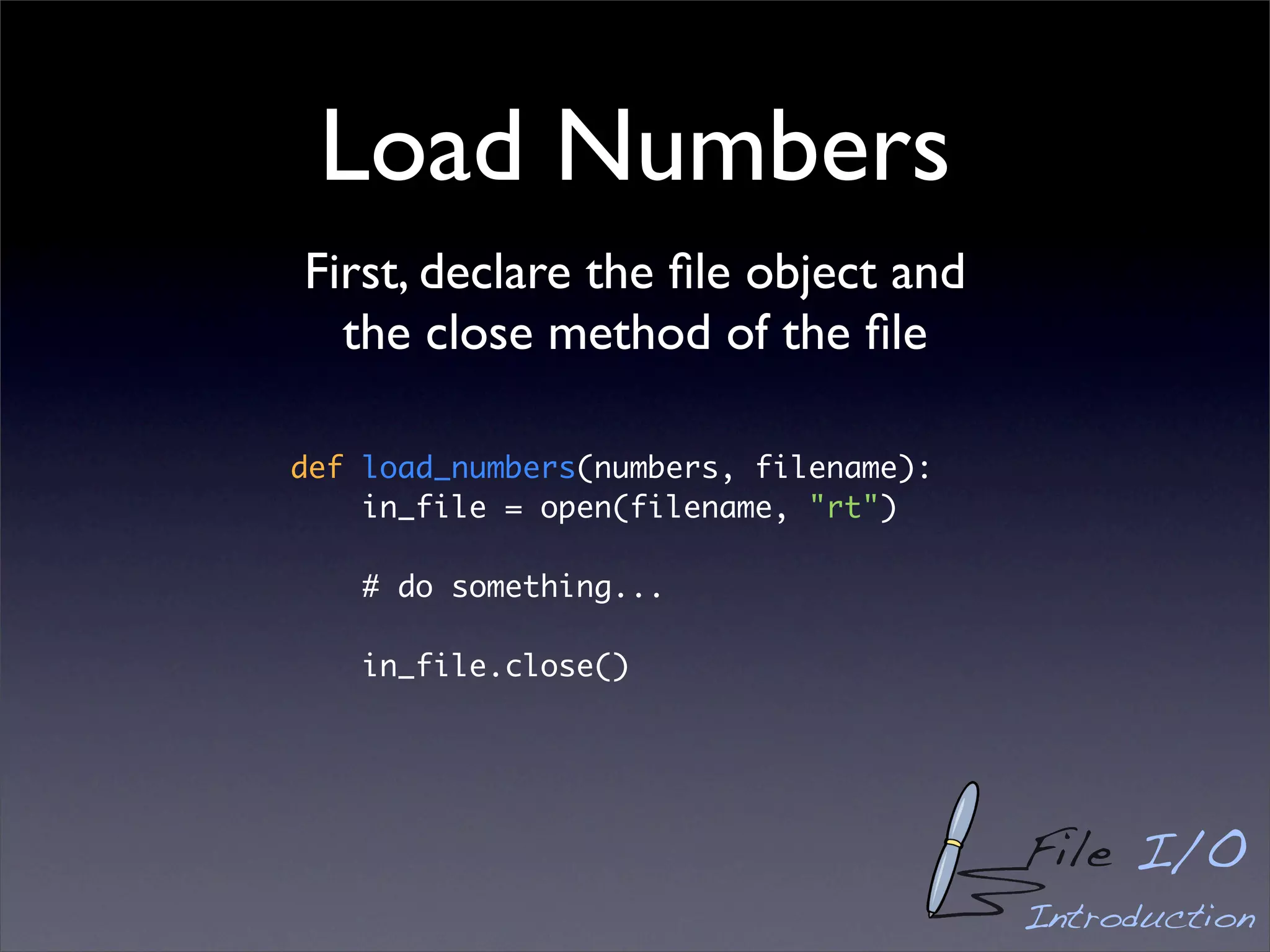
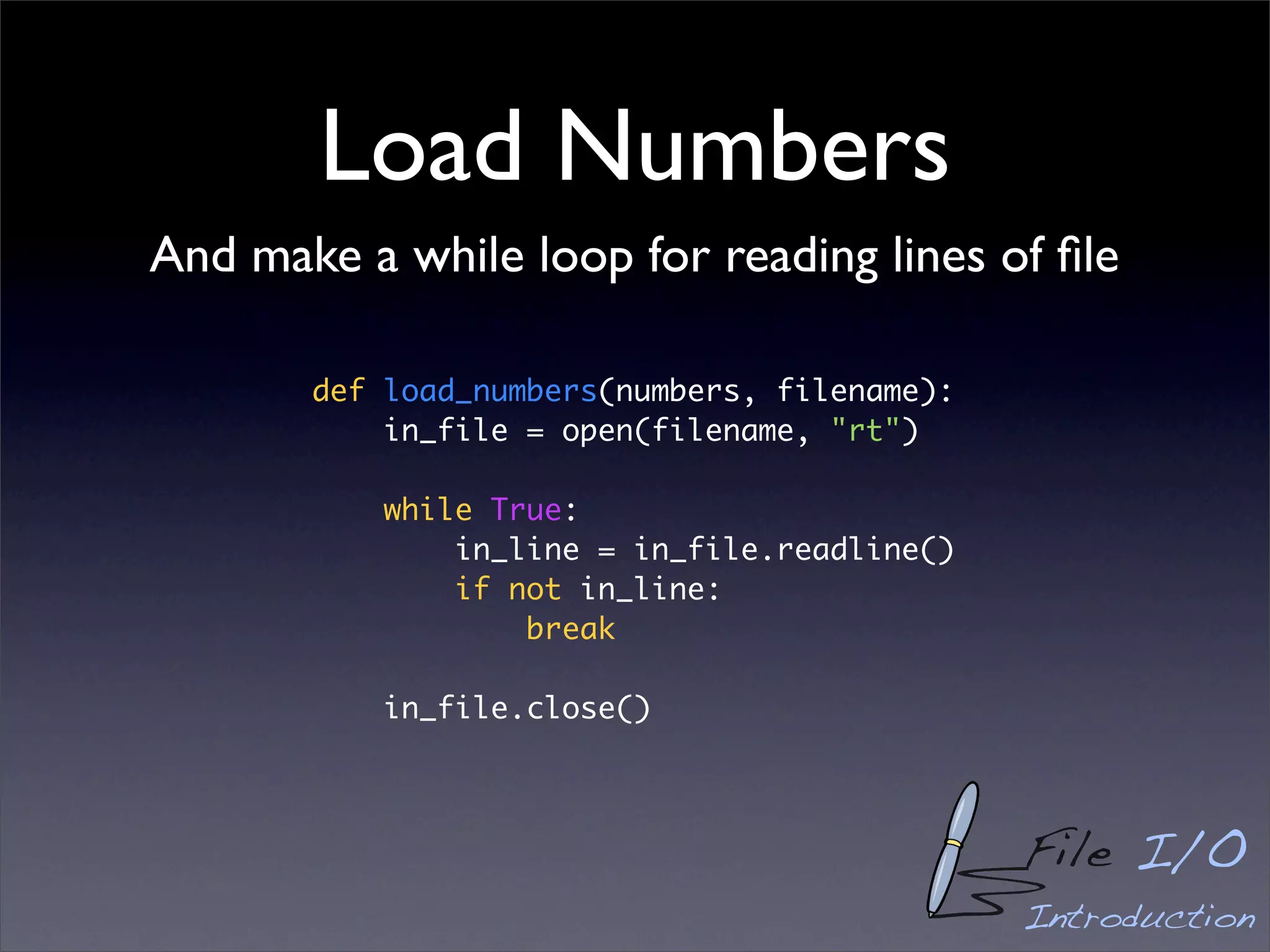
![Load Numbers
Remove the last character of newline(“n”)
def load_numbers(numbers, filename):
in_file = open(filename, "rt") “The stringn”
while True:
in_line = in_file.readline()
if not in_line:
break
in_line = in_line[:-1] “The string”
in_file.close()
File I/O
Introduction](https://image.slidesharecdn.com/fileio-101213100021-phpapp01/75/Python-FileIO-10-2048.jpg)
![Load Numbers
def load_numbers(numbers, filename):
in_file = open(filename, "r")
while True:
in_line = in_file.readline()
if not in_line:
break
in_line = in_line[:-1]
name, number = in_line.split(‘,’) # split to two parts
numbers[name] = number # save them to numbers
in_file.close()
File I/O
Introduction](https://image.slidesharecdn.com/fileio-101213100021-phpapp01/75/Python-FileIO-11-2048.jpg)
![Save Numbers
def save_numbers(numbers, filename):
out_file = open(filename, "w")
for k, v in numbers.items():
out_file.write(k + "," + v + "n")
out_file.close()
Multiple assignment:
(k, v) = [“name”, “phone”]
>>> k
“name”
>>> v
“phone” File I/O
Introduction](https://image.slidesharecdn.com/fileio-101213100021-phpapp01/75/Python-FileIO-12-2048.jpg)
